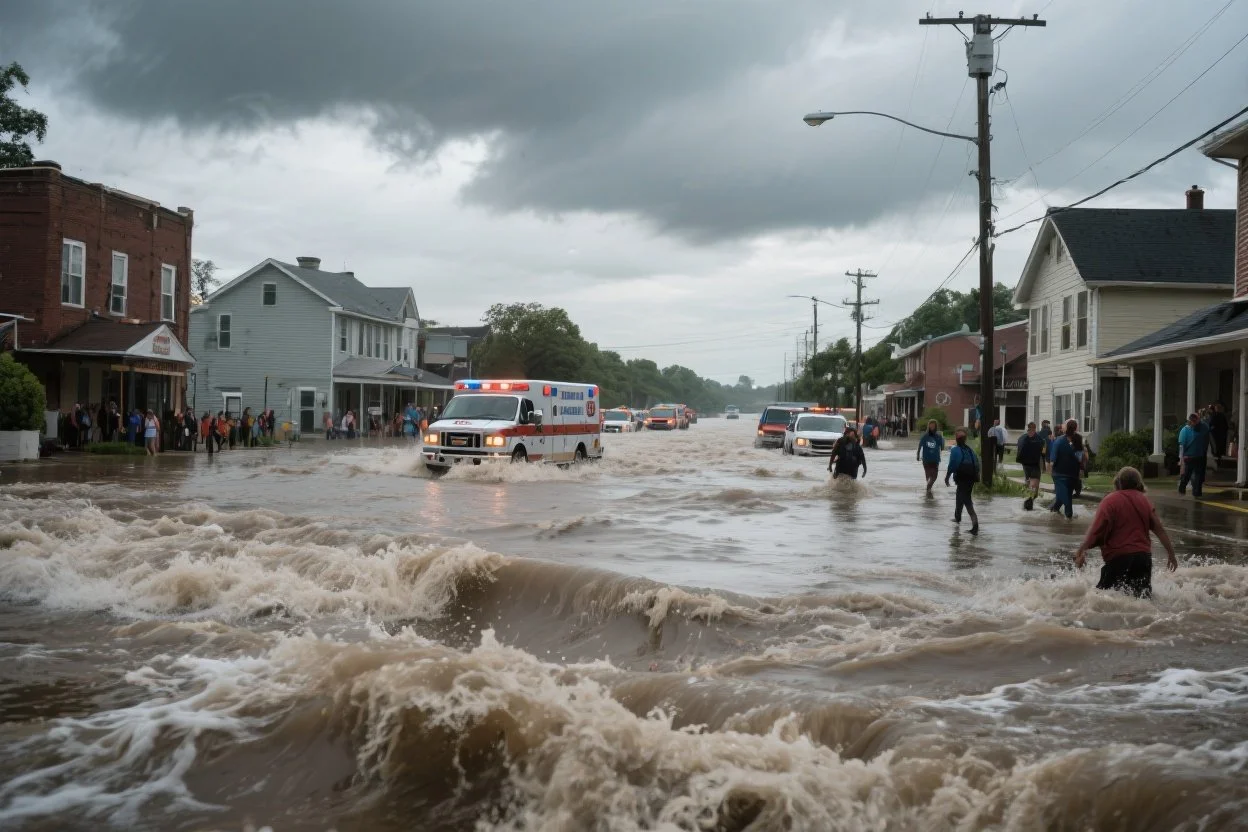Three Steps to Take When Facing Flood Hazards In Your Area
Kara Stamets, Senior Content Marketing Specialist, Alertus Technologies
Summer weather brings rain showers, warmer temperatures and extreme weather risks of flooding, which can occur due to excessive rainfall and other geographic factors like low-lying areas and overwhelmed drainage systems. Flash flooding can be disastrous for communities and cause significant workplace disruptions, so organizations must prepare.
Many areas of the US have experienced unprecedented flash floods over the past few years – historic flooding in South Florida that dumped 88 billion gallons of water over the course of a few days, dangerous flooding in Utah due to warming temperatures causing snow melt, and most recently, catastrophic flash flooding in Central Texas. These incidents demonstrate how quickly flooding can occur and the negative impacts on communities and organizations, from schools and campuses to transportation and corporate industries. The best way to encounter flooding is to prepare, follow safety precautions, and be aware of hazards afterwards.
Prepare For Floods
Organizations and individuals alike can prepare for flood hazards by:
Checking out important resources including FEMA’s Flood Map Service Center to find out flood risks in your area, and signing up for the National Oceanic and Atmospheric Administration (NOAA) Weather Radio, the Emergency Alert System (EAS), as well as local alerts.
Purchasing or renewing flood insurance, which is critical when recovering from flood damage. The National Flood Insurance Program (NFIP), managed by FEMA, provides flood insurance to property owners, renters and businesses.
Making a plan for family and pets when needing to evaluate or find shelter. Move important documents and items to higher levels or floors and clean out drains and gutters if possible.
During a Flood
If you are facing a flood warning, in which hazardous conditions are imminent or already happening, you should:
Find shelter and move to higher ground or the highest level of a building
Avoid bridges
Do not drive, swim, or walk through flood waters
Evacuate the hazardous area immediately, if instructed to do so
If individuals are at work or traveling when a flood warning is issued, organizations can utilize audible-visual solutions like overhead PAs, sirens, and digital signage override on cable TV systems in lobbies and hallways to alert everyone of flood danger and important steps to take. IP Speakers and High Power Speaker Arrays alert those working outside to quickly find shelter, evacuate, and find alternate routes in flood-prone areas.
After a Flood
For individuals, stay informed by monitoring local radio, TV, and social media updates. Only return to your home or retrieve your vehicle once it is safe to do so. Wear protective clothing and masks if dealing with mold and be aware of electrical equipment if it is wet.
For organizations, keeping communication lines open with your employees will be the best way to keep everyone informed on openings, closings, and general updates. Alertus’ Threatwatcher™ automated weather monitoring service broadcasts real-time weather information and up-to-the-minute, site-specific warnings, including flood warnings, from the National Weather Service. Utilize mobile apps to distribute emergency notification alerts customized to your community.
Flooding can occur year-round, so stay prepared. Visit our website to learn more.



